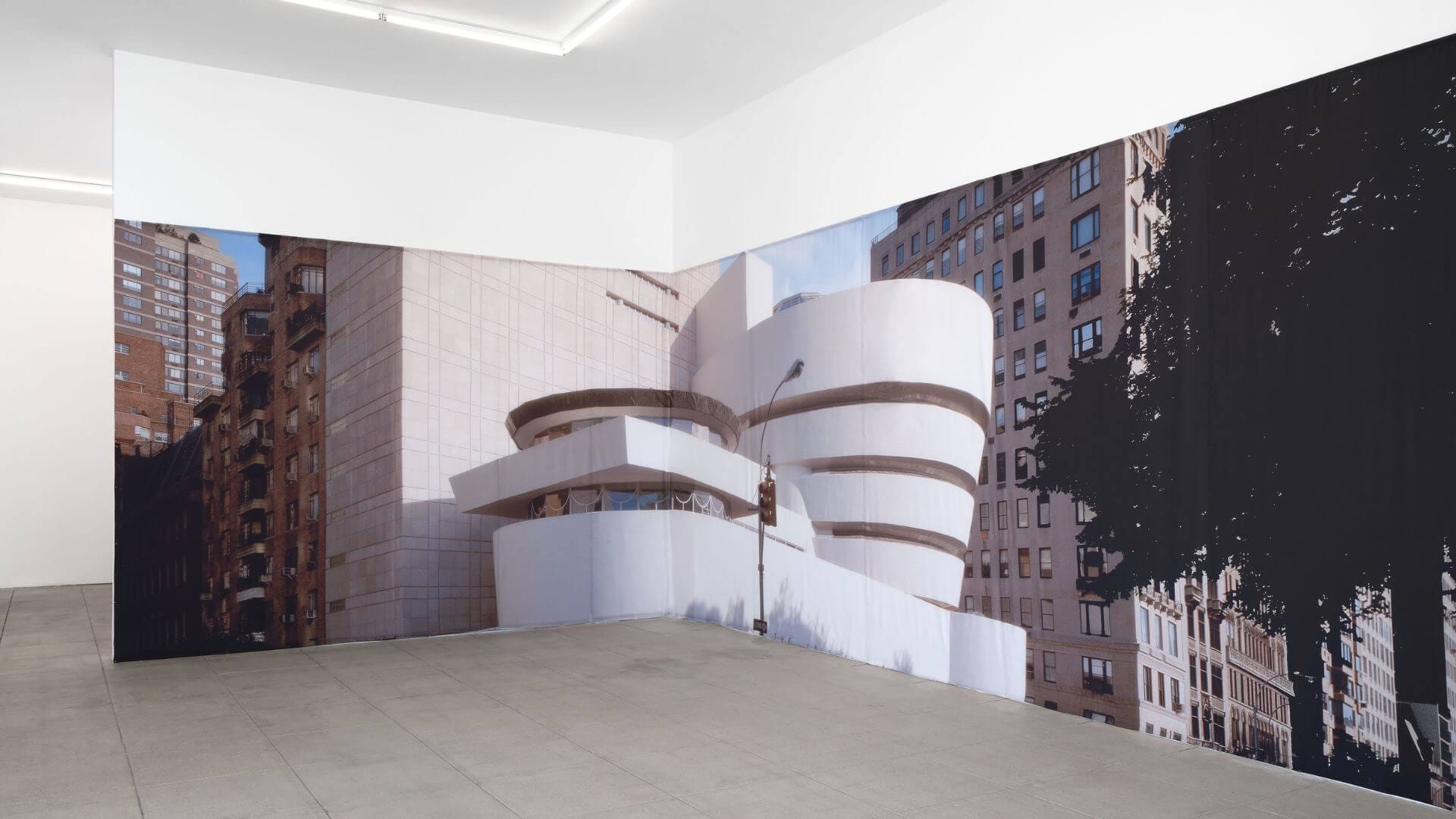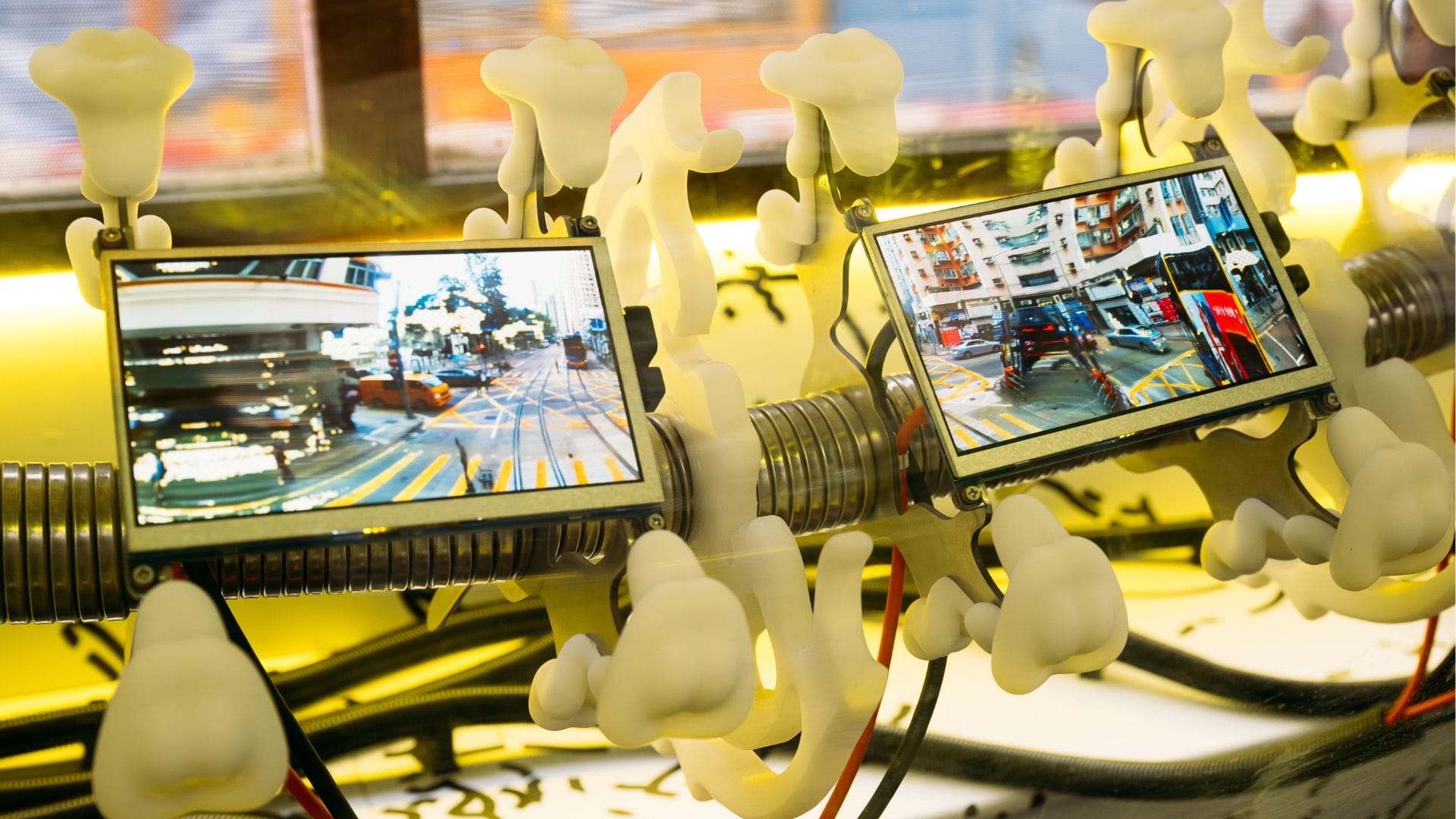
Steph Huang: See, See, Sea” at Tate Britain, London
As soon as you enter, the atmosphere immediately immerses you in a contemplative exploration of the invisible connections between maritime trade and daily consumption. The exhibition space, bathed in soft, diffused light, features a carefully curated arrangement of sculptures, found objects, and video installations that invite visitors to reflect on the intricate web of global trade and its environmental and cultural impacts. This is See, See, Sea, Steph Huang’s exhibition at Tate Britain.
The show is anchored by a large video projection depicting scenes from a small fishing community in Devon, engaged in scallop gathering and traditional fishing practices. This backdrop sets the tone for the surrounding installations: delicate hand-blown glass sculptures and various found objects, each echoing elements of the film, such as the smooth, curved lines of fishing traps or the fluid motion of the sea. The video is not merely illustrative; it functions as the thematic core from which the other works radiate, creating a sense of interconnectedness.

Huang’s use of materials is strikingly deliberate, embodying a playful yet critical approach. A crushed shopping cart, scattered across the gallery floor, becomes a powerful symbol of the collapse of consumerism. Bronze casts of scallop shells dispersed throughout the space emphasize the waste and neglect often accompanying food production, oceanic products discarded and forgotten, much like the invisible labor that brings food to our tables. Similarly, delicate fig casts, nestled within the cart’s steel frame, reference urban abundance left to rot, a sharp commentary on the disconnect between consumer habits and nature’s cycles.
The installation as a whole skillfully juxtaposes elements of fragility and durability. The hand-blown glass sculptures—translucent and precarious, sharply contrast with the solidity of bronze and steel, highlighting the tension between natural cycles and human interference. This interplay of contrasts reflects Huang’s concern with the growing disconnect between people and the sources of their food, as well as the cultural and communal losses resulting from the mechanization and globalization of food production.

Compared to her previous works, See, See, Sea delves deeper into Huang’s ongoing exploration of the food industry, now with a more focused narrative on the socio-environmental repercussions of maritime trade. The choice of materials and their intricate, almost poetic arrangements demonstrate an evolution in her practice, where previous works might have leaned more heavily on conceptual foundations, this exhibition marries concept with a tactile and visceral presence that resonates deeply with viewers.
Huang’s work, with its mix of video, sculpture, and found objects, successfully evokes a sense of urgency and nostalgia, inviting us to reconsider our relationship with what we consume and the broader implications of our choices. The exhibition is a compelling addition to Tate Britain’s Art Now series, which not only highlights emerging talent but also addresses the urgent issues that define our time.



fakewhale
Founded in 2021, Fakewhale advocates the digital art market's evolution. Viewing NFT technology as a container for art, and leveraging the expansive scope of digital culture, Fakewhale strives to shape a new ecosystem in which art and technology become the starting point, rather than the final destination.
You may also like
Eliza Douglas: Guggenheim, at Overduin & Co., Los Angeles
Some artists build worlds; others wrap them up. Walking into Guggenheim, Eliza Douglas’s latest so
Ian Margo: d/wb project Abstraction, Mediation, and the Spiral of Technoculture
The next Solo Release curated by Fakewhale presents d/wb, a project by Ian Margo that unfolds as an
Tram0 and the Craft of Infrastructure in Hong Kong
Tracing Layered Histories and Structural Logics Ding Lab is the most recent chapter of the ARTS·TEC




